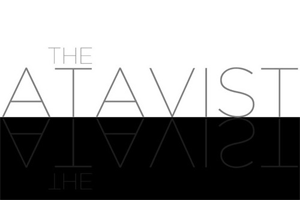What’s the best length for an article on the Internet? I’ve been asked that question more than a few times, by journalism students and fellow writers looking to boost their traffic.
I always tell people that the best word count for an article is… just a few words short of how many your audience is willing to read on that topic.
Is that 50 words? 500? 5,000? 50,000? That’s up to your audience, and to you, with your ability to make the topic interesting to the audience.
I was so encouraged reading my OJR colleague Robert Hernandez’s Q&A with Evan Ratliff of The Atavist. In the post, Ratliff rejected the straw-man argument that some content is simply too long for people to read. (Go ahead and click back to read it if you haven’t yet. It’s well worth your time, and I’ll wait here for you.)
If you’re itching to trying writing in longer format, I think it’s important that you take some time to understand the changing dynamic of long-form writing in the Internet era from the readers’ perspective. Yes, I know that I’ve encouraged you to keep it tight, but if you can write in a way that sustains your reader’s attention, you can keep going far past what most copy editors would consider a maximum acceptable word count.
Let me state upfront my beliefs that readers’ attention spans are not declining. What is declining is the amount of time that readers have for each piece of content that comes their way.
Think back 20 years, if you’re old enough. How many items did you encounter that you could read in a given day? One newspaper? Maybe a magazine a few times month? Perhaps you read books, but probably no more than one at a time. Maybe you listened to the radio. Or watched TV. How many cable channels did your service deliver then? Think back before cable (if you can). How many TV channels did you have to choose from then? Five? Ten, if you lived in a big city?
Now, think about today. Maybe the number of print newspapers you read is down. (Sigh.) But how many websites do you see on a given day now? What about Facebook and Twitter? How many links come across your computer or phone each day? Do you listen to podcasts? What about satellite radio? Digital TV? Do read e-books? How many more options do you have to read or listen (or play) in a given day, compared with 10 years ago? Or 20? Or 30?
How many more hours do you have in the day to consume that content? Just the same 24, right? I was a math student, and I know that many journalists aren’t fans of the subject. But basic math tells us that when you try to divide many more content opportunities into the same number of hours of the day, the amount of time you have for each opportunity gets smaller and smaller.
That’s what many of us are seeing when we complain about short attention spans. It’s not that we can’t pay attention to longer forms. It’s that we have less time to make a decision about whether we should pay attention at all.
But once readers have made the decision to stick with something, many readers will stick with rewarding content for a long time. For years, I’ve been telling people at conferences that it’s ridiculous to assign short attention spans to a generation that will read 800-page “Harry Potter” books cover-to-cover. Or spend 10 or more a day mastering the latest release of “Madden.”
How much time have you spent playing “Angry Birds” this month? :^) A “short attention span” didn’t stop you, did it?
The challenge for a writer, filmmaker or application developer is to engage readers’ interest in that short moment the reader gives you before deciding to move on to something else. If you can grab attention in that moment, you have the opportunity to keep the reader with you indefinitely, based only upon your ability to hold that reader’s thoughts.
This is the great change in long-form writing in the Internet era. You can’t rely on a lack of other choices holding the reader with you until you get around to saying something compelling. You’ve got to give them something to get their attention right away.
Then, you need to continue to work to engage your audience, to earn the credibility to allow you to write more deliberately. Once you’ve earned an audience’s trust, they’ll allow you a little more time to lure them into a story.
I’ve been eagerly awaiting the debut of another longer-than-your-average-blog-post journalism initiative, Grantland.com, a project of ESPN’s Bill Simmons. Simmons, who also helped drive the sports network’s recent long-form “30 for 30” documentary series, long ago established himself with his audience by delivering irreverent, yet often insightful, narratives on sports and popular culture, page-count limits be damned. Critics have complained that his columns on ESPN have become ever more scarce, and filled with the same old schtick. But that he continues to attract so much attention, and has the juice within ESPN to launch projects such as “30 for 30” and Grantland.com testifies to the success he had in building an audience over time, and the attention that audience will continue to give him as a result.
One of the first writers Simmons has hired for the new site is Katie Baker, who posted a “sneak preview” essay on the New York Knicks’ swift exit from this year’s NBA playoffs.
I think Baker is one of the freshest, most engaging young voices in sports journalism today. Her writing is naturally of and for online media, not adapted or affected for it. More importantly, she’s built an audience for her voice by grabbing readers with headlines such as The Confessions Of A Former Adolescent Puck Tease, then keeping them on the page with paragraph after paragraph of engaging storytelling.
That writers such as Baker are getting gigs and gaining readers should encourage fans of long-form writing. They’re destroying the straw man argument that readers won’t sit for longer articles. Heck, if someone can get the ‘go-for-the-quick-verbal-kill’ Deadspin audience to stick with her for over 5,000 words, any writer should be encouraged that taking extra time with a piece is possible.










